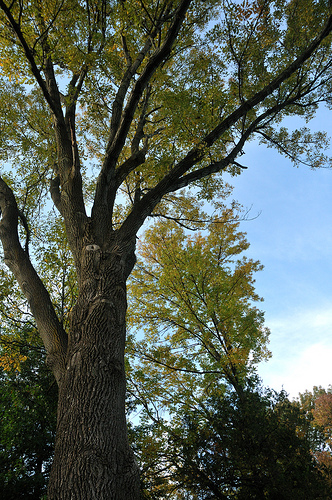Interactions
So what does the morel mushroom interact with?

Morel mushrooms are often found in
forested areas around dead elm
trees, Sycamore, apple trees, under
wood scraps and Ash trees. They are
found around these areas because of
their interactions with the roots of
trees. With the use of the morel's
mycorrhizae (which means fungus
root), the morel creates an
ectomycorrhizae and because of this,
morels have a mutualistic symbiosis
with the roots of these trees.
(which was explained in
nutrition). This mutualistic
relationship means that both the
host and fungi benefit. The fungi
and the host exchange nutrients
between the mycelium of the fungi
and the roots of the tree.
Morels also interact with organisms
of the animalia. When the time comes
around for morels to begin
"popping", not only do humans hunt
them, many other animals do as well.
A couple of examples are the
(mule) deer,
Elk and
grey squirrel. These three
animals are only a few of which love
eating morel mushrooms, but when
morel season comes around these
animals along with humans all "race"
in order to be the first to get
their hands (or mouth) on this
nutritious and great tasting
mushroom. In the food web, the morel
mushroom is at the bottom in the
sense of "preying" on other
organisms. Yes, it does "feed" off
nutrients/decomposing objects in the
area, but it is still at the lowest
level.



Are morels sustainable?
Since humans and other organisms
alike use morel mushrooms as a food
source, it is very important for
morels to be sustainable. Now morels
are a special treat for other
organisms, but they are still
important and could cause some
problems if they ever went
endangered or extinct. To stay
sustainanble, morels have adapted to
be able to use their sclerotium to
protect themselves underground
during harsh conditions. As long as
the areas morels grow in doesn't get
dug up or built over, they should
continuously grow in those areas.
The chance for every area being
destroyed is currently possible, but
unlikely at this time. As long as
people stay passionate about finding
and eating morels, they should be
sustainable for years to come.